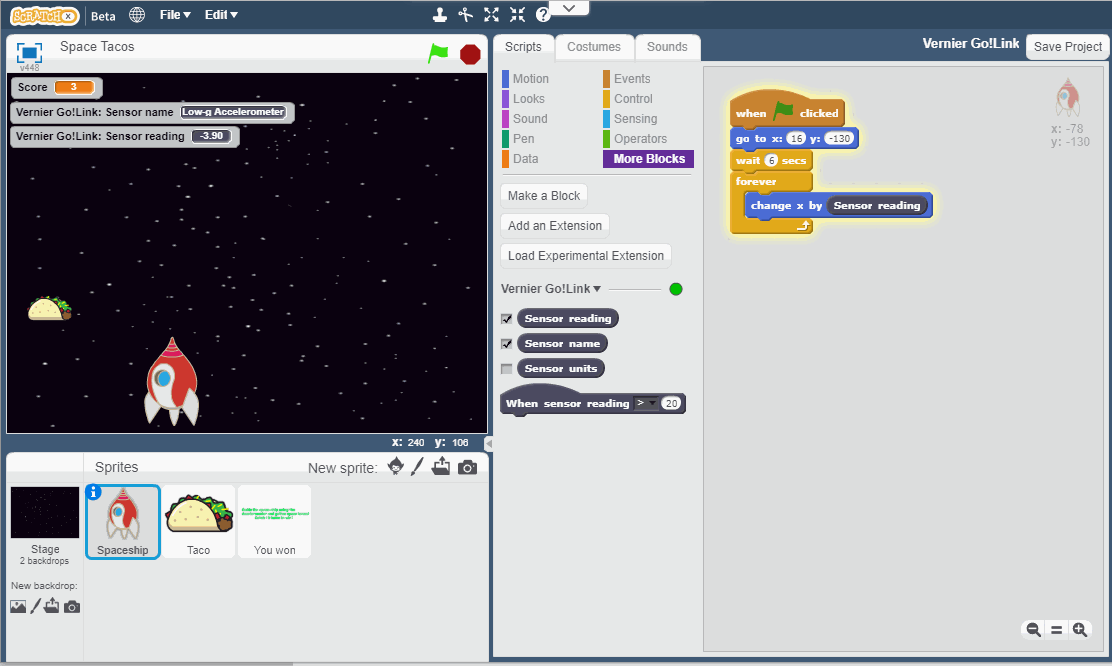
It is now easier than ever to connect Vernier sensors and Scratch. Both are powerful and simple to use, and they make it easy to incorporate coding into your curriculum.
Our new Go!Link extension for Scratch allows you to connect your Scratch project to a wide variety of sensors, ranging from our Sound Level Sensor to our Relative Humidity Sensor. The extension allows students to use Vernier sensors in new and engaging ways, such as using a Low-g Accelerometer to control the motion of a spaceship.
Create a projectile motion simulation in which acceleration due to gravity is controlled by the orientation of the Low-g Accelerometer. Students can see how the shape of the projectile’s motion changes as the acceleration due to gravity changes. You can also create discrepant simulations where the laws of science are mixed up or incorrect. For instance, in the projectile motion simulation, the projectile could accelerate in both the horizontal and vertical directions. When students feel that something is off, challenge them to figure out how exactly the simulation gets it wrong.
As more research science requires automation, analysis of huge data sets, and computational thinking, students can get exposure to coding and computer science with Vernier sensors and Scratch.
Learn more at www.vernier.com/scratch
